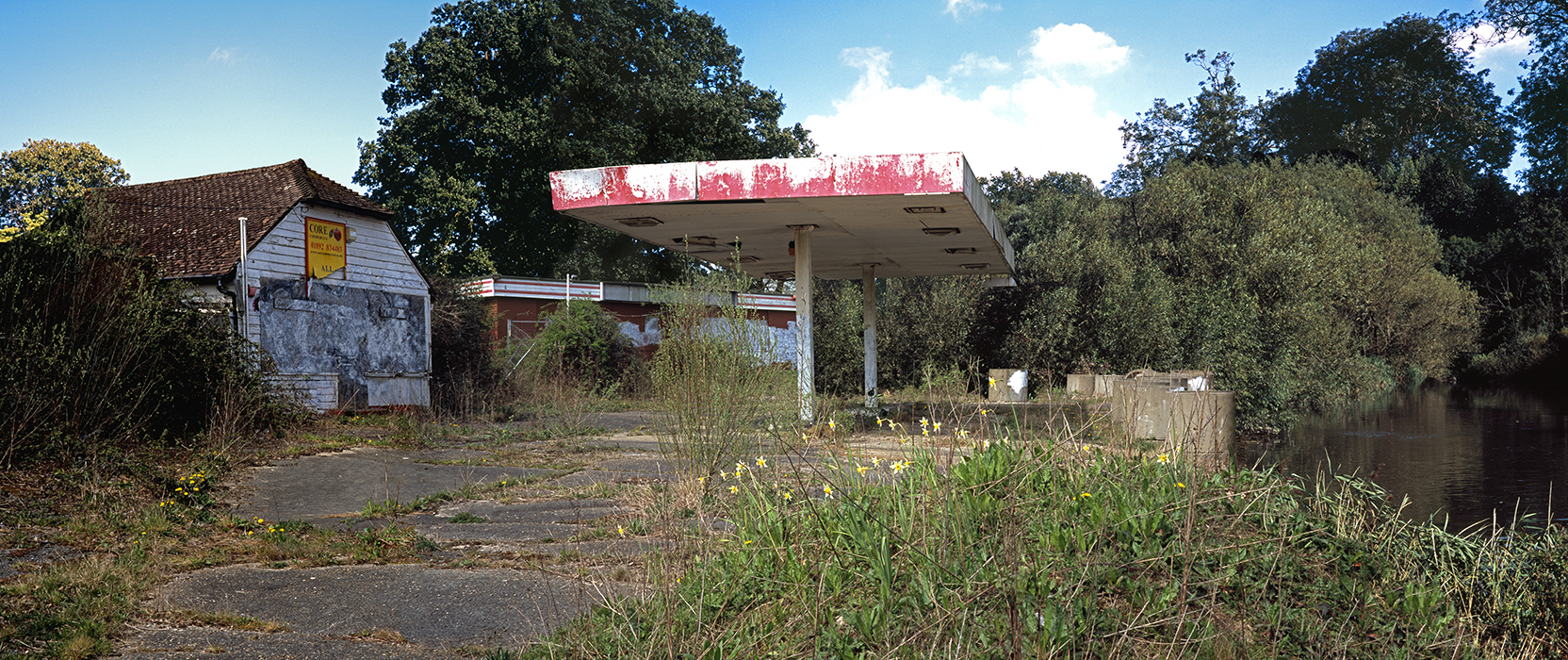
The ruin has long been associated with picturesque beauty. As far back as the 18th century is was found to be evocative of nature as a reclaiming force, with a pleasing melancholy being found in nature’s eventual annulment of all human endeavour. The gas station, by contrast, took on an entirely different meaning during its emergence as a cultural symbol. Long before anxiety over toxic byproducts and diminishing oil reserves, the gas station was a potent signifier of freedom. This use of the gas station is easily found in Hollywood cinema but a more unusual treatment of the filling station and the freedom it offered is found in Shell's television advertising campaign of the 1950s where the poet John Betjeman spoke of the pleasures of exploring the British countryside with the aid of Shell's network of filling stations. Shell also funded a series of tour guides, which a number of renowned artists and writers (including Betjemen) contributed to. In the current day, such an optimistic, view of motoring has passed. In addition to anxieties over costly, non-sustainable energy use, a streamlining of the industry has placed many filling stations beyond the point of economic viability and the gas station ruin is now a not uncommon sight. In the series, a digital transplanting of the ruins to a remoter landscape links their meaning to the original picturesque motif. Perhaps ultimately they signify that an era is reaching its end and the technology of oil powered transportation may soon be viewed with romantic affection.
